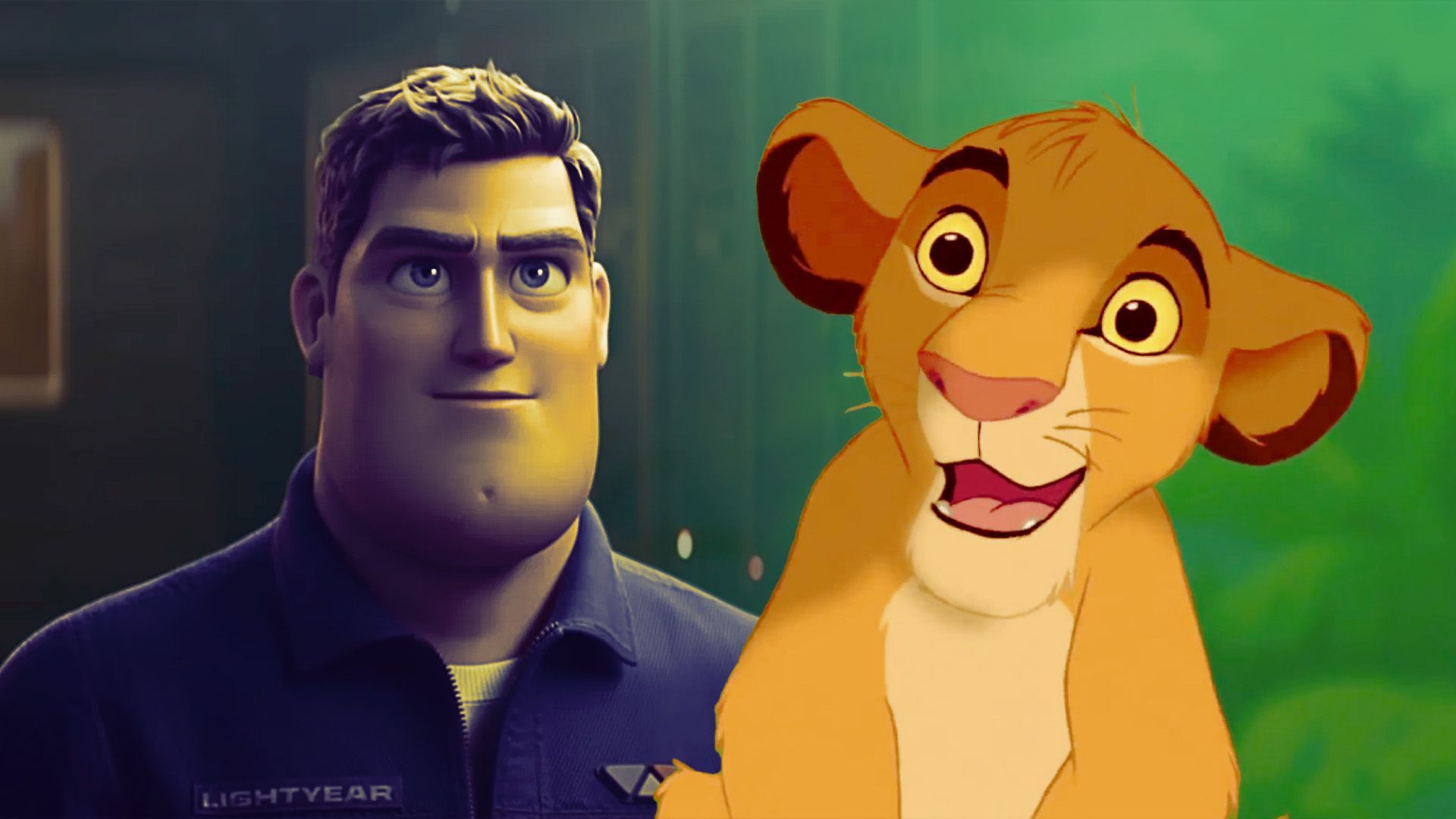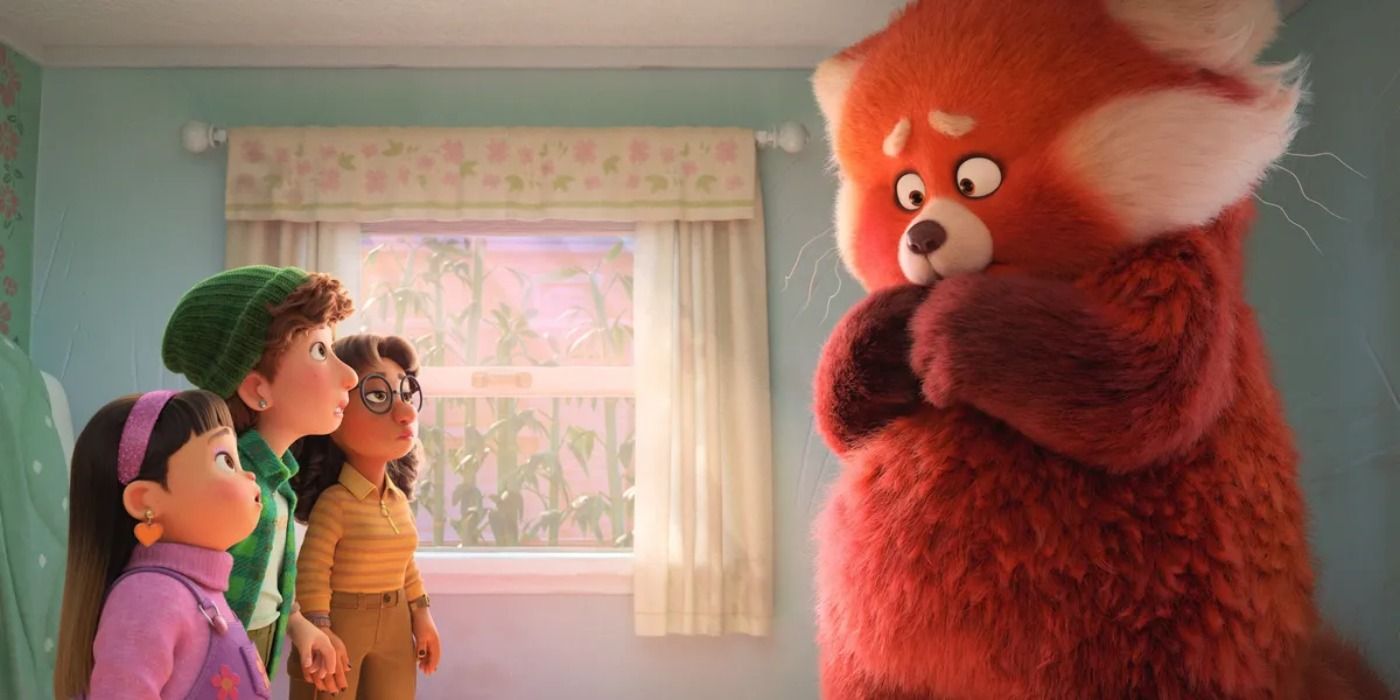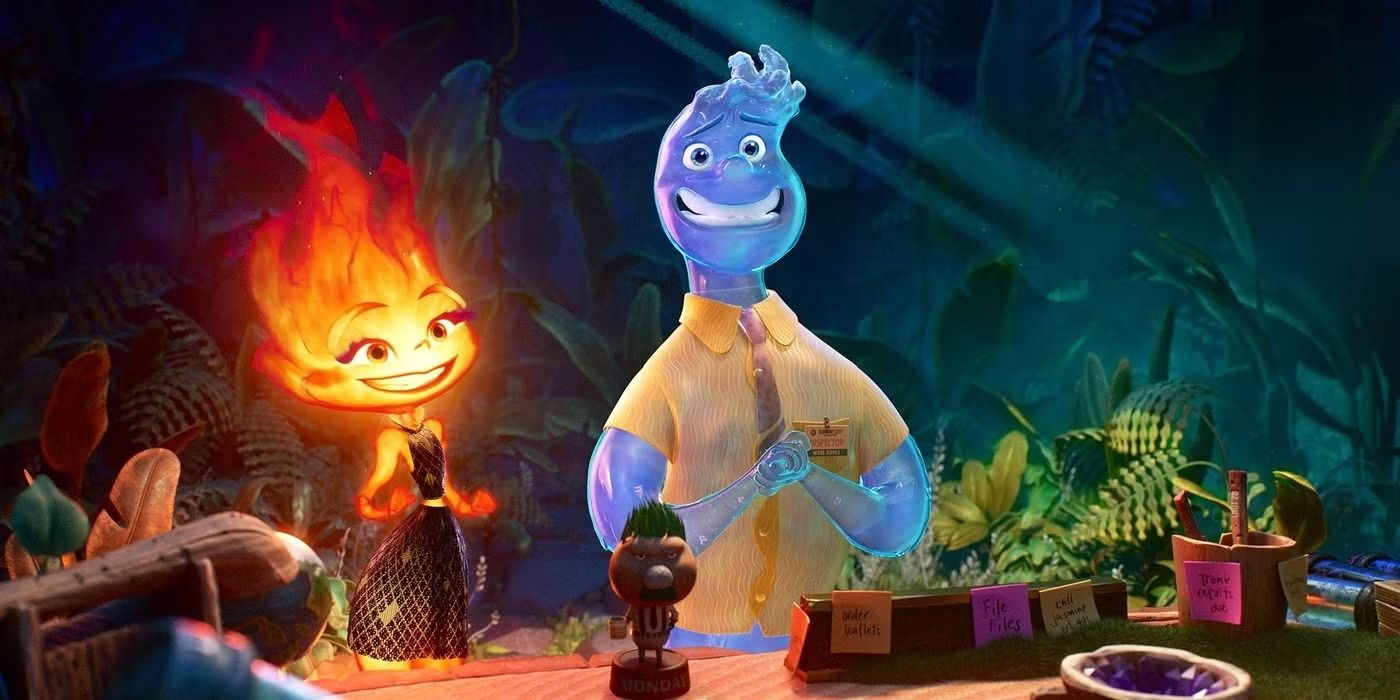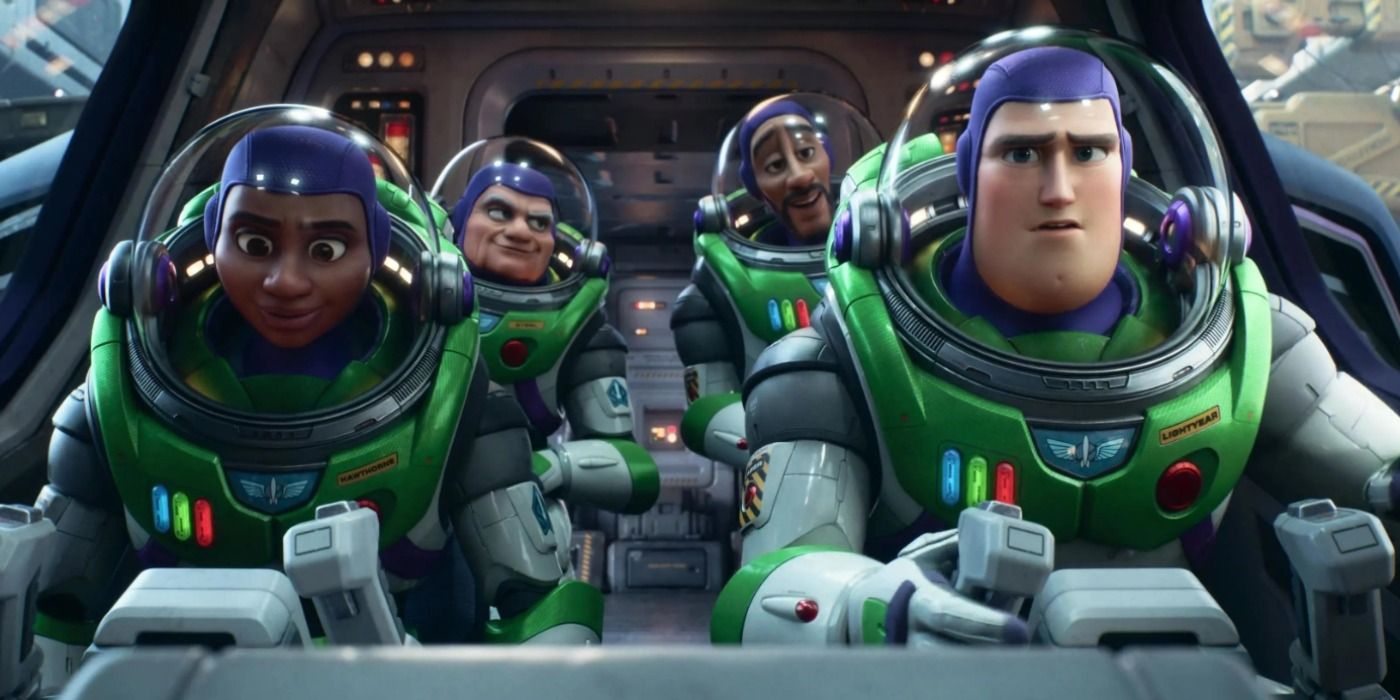Elio has arrived in theaters and is Pixar’s latest film in a new era. Elio might be Pixar’s 29th film, but it’s the eighth film of this decade, continuing an interesting trend for Pixar. This year marks the 30th anniversary of Toy Story, and, by extension, 30 years of Pixar feature films. Despite most recent films receiving positive reviews, there seems to be a general sentiment among fans that Pixar is no longer the powerhouse it once was. The idea of a Pixar movie being a guaranteed box office hit no longer seems certain unless tied to a major franchise. It appears to be a similar crisis facing the Marvel Cinematic Universe, but nobody is exactly claiming Pixar fatigue or computer-animated film fatigue.
Part of it is nostalgia. An entire generation grew up on the original Pixar film, so no matter what, the newer movies cannot exactly reach that height because they encountered it as adults. Yet Pixar’s commitment to expanding its talent pool with new creative voices has allowed its films post-2020 to have the same creative ethos that made the original run of Pixar titles so groundbreaking, while embracing new animation styles and culturally specific stories. Pixar hasn’t lost its identity; instead, it has reinvented itself.
Pixar’s Numerous Eras, Explained
Pixar films can be split up into three eras. The Golden Age, the Sequel Age, and the Experimental Age.
- The Golden Age: 1995 to 2010 (Toy Story, A Bug’s Life, Toy Story 2, Monsters Inc., Finding Nemo, The Incredibles, Cars, Ratatouille, WALL-E, Up, and Toy Story 3)
- The Sequel Age: 2011 to 2019 (Cars 2, Brave, Monsters University, Inside Out, The Good Dinosaur, Finding Dory, Cars 3, Coco, Incredibles 2, and Toy Story 4)
- Experimental Age: 2020 to Present (Onward, Soul, Luca, Turning Red, Lightyear, Elemental, Inside Out 2, Elio, and Hoppers)
The Golden Age is likely what most people imagine when they think of Pixar. Aside from Cars, every film in this era received extremely positive reviews, with six of the eight eligible films winning the Best Animated Film Oscar. Up and Toy Story 3 became the second and third animated films nominated for Best Picture. These movies were not only box office hits and critically well-regarded, but also original ideas that broke away from the conventions of what many expected, not only from animated movies but also from those by Disney, which helped Pixar define its style. The one franchise they had was Toy Story, and each film was better received than the last. Pixar was known for turning original concepts into box office and critical hits, and for being a brand that audiences trusted.
Following Toy Story 3 was Cars 2, Pixar’s second attempt at a franchise, marking a significant shift in the studio. After so many highs, Cars 2 was a significant low as it was the first Pixar film to get a rotten score on Rotten Tomatoes. Brave followed, which, despite winning Best Animated Film at the Academy Awards, was seen as disappointing by fans. While the 2010s saw Pixar create great original films like Inside Out and Coco, they also marked the studio’s first outright flop with The Good Dinosaur and an emphasis on sequels and prequels to popular films from their Golden Age, in what, looking back, seems safe to call The Sequel Age.

Related
7 Big Differences Between Pixar and Disney Movies
Disney Animation and Pixar have made some of the most memorable films in history, but what themes and styles separate the two animation powerhouses?
During the Golden Age, only two of Pixar’s 11 films were sequels, about 18% of their output. From 2011 to 2019, six of their 10 films were franchise extensions, so 60% of their production. This isn’t to say that the sequels were necessarily bad, as audiences and critics did love all but the Cars extensions to some degree or another. It was disappointing to see the studio, once known for its creative original ideas, emphasize franchise continuation.
After Incredibles 2 and Toy Story 4, Pixar Animation appeared poised to return to its roots in the 2020s. It was clear the franchise mentality had certainly increased Pixar films’ profits, but also undermined what made them so special. A concerted effort was made to produce original films. The first four films of this new era were precisely that. Onward, Soul, Luca, and Turning Red were original ideas that felt classically Pixar, whose initial elevator pitch couldn’t quite crack the surface of the deeper emotional underpinning.
Unfortunately, the COVID-19 pandemic hit, and Disney’s former CEO, Bob Chapek, made the ridiculous decision to send Pixar films straight to Disney+ for no additional charge, ultimately hurting the brand that is still recovering from it. Notably, the four original films were sent to streaming while the more traditionally safe Lightyear was given a theatrical release. This new era of Pixar was cut off at the knees before it began. Yet, one look at the films released so far shows that Pixar is still just as great as ever.
Cultivating New Talent To Take Pixar Into the Future
One major shake-up at Pixar was the firing of John Lasseter. Lasseter was one of the key creative minds at Pixar, who helped build the studio and directed some of the company’s most iconic films, including Toy Story, A Bug’s Life, Toy Story 2, and Cars. In November 2017, Lasseter took a six-month sabbatical from Pixar and Walt Disney Animation Studios following multiple reports of sexual misconduct and harassment. He officially left the company in 2018, and the position of Pixar’s Chief Creative Officer was taken over by Pete Docter, the director of Monsters Inc., Up, Inside Out, and Soul.
Lassiter brought on many of his animation school friends, like Pete Docter, Andrew Stanton, Brad Bird, and Lee Unkrich. These filmmakers went on to create some of Pixar’s most acclaimed films, including Up, WALL-E, Ratatouille, and Coco, respectively. However, it also created the vibe of a boy’s club, one that Rashida Jones hinted at being why she left work on Toy Story 4. Docter has certainly looked to correct this by promoting filmmakers within the company who had done great animated short film work during the sequel era to feature film directors.

Related
What Happened to Pixar Shorts?
Pixar used to screen short films before their films, but in recent years, they have stopped. Why did they stop, and will the tradition ever return?
Following his 2011 short La Luna, director Enrico Casarosa directed Luca. Domee Shi won an Academy Award for her short film Bao and then, in 2022’s Turning Red, became the first woman to direct a Pixar film. Peter Sohn had been a protégé of Brad Bird’s for years, having worked on various Pixar films, and was given the opportunity to tell a very personal story with Elemental. Kelsey Mann directed the Monsters University short Party Central before directing Inside Out 2.
After directing short films like BURN-E and Toy Story Toons: Small Fry, Angus MacLane directed Lightyear. Madeline Sharafian’s short film Burrow debuted on Disney+, and now she is one of Elio‘s co-directors. Pixar has expanded its talent pool, allowing a new generation of directors to shape the company for a new era that retains the core values audiences love about these films while tackling new stories, perspectives, and cultures.
Pixar Is Redefining Itself
Pixar has been producing feature films for 30 years, and part of its continued relevance stems from its willingness to push the envelope with each new release. These new films aren’t afraid to change their animation style. Turning Red and Luca have a slightly more exaggerated cartoonish aesthetic than Onward or Soul, which look different from Lightyear’s almost photorealistic, detailed world. Despite what some posts online might say, one art style is not inherently better than another. Pixar considers which style will best convey their stories, ensuring they don’t all look alike.
One look at Pixar films like Onward, Soul, Luca, Turning Red, Elemental, and Elio reveals that these films feel right at home with movies like Toy Story, Monsters Inc., Ratatouille, WALL-E, and Up, as they feature bold, original concepts with colorfully imaginative worlds. None of these films seem like safe picks, but Pixar invested in sometimes strange concepts, such as “what if a house had a bunch of balloons on it” or “what if a young girl turned into a giant red panda,” knowing they could craft universally relatable stories with deep emotional gut punches.
Even Lightyear, widely considered one of the studio’s weakest films, is a bold spin on refocusing the Toy Story franchise. They opted to tell the in-universe Buzz Lightyear movie that exists in Toy Story and committed to the bit, crafting a straightforward sci-fi epic. It might not have worked for audiences, but it was not the safe, traditional way to do a new Toy Story film.
Is This Pixar Era Coming to an End?
Pixar has a slate of new films on the horizon. Their next film is Hoppers, an original idea from We Bare Bears director Daniel Chong, who got his start working at Pixar Animation. There is also Gatto, from Luca director Enrico Casarosa. However, the studio also has three high-profile sequels in development. Toy Story 5 will be released three months after Hoppers, possibly to hold up that more risky original idea. Incredibles 2 and Coco 2 are also set for release by the decade’s end.
The thing about an era is that you can never predict when it will end; it can only be observed after the fact. What Pixar’s upcoming slate will say about its legacy is unclear. Yet, the back half of the 2020s appears to be leaning towards more sequels, seemingly in response to some underperforming original films, the degradation of the brand due to Disney+ releases, and the massive box office success of Inside Out 2.
It would certainly be a shame for Pixar’s 2020s to be defined as a slate of original films that were sacrificed to boost a streaming service, where the only films that audiences want to see in theaters are sequels, because that overlooks the great films that Pixar has made during this time. They might not be the same movies audiences grew up with, but they should not be discounted and are, in many ways, just as good. Lining up Pixar’s 2020s slate of films shows that the company has not lost its way, and in time, a generation will hold films like Turning Red, Soul, Luca, Elemental, and even Lightyear in high esteem within the Pixar canon. Elio is in theaters now.
This story originally appeared on Movieweb




